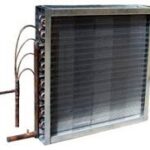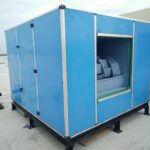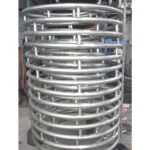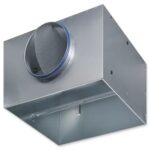Volume Control Dampers
Volume Control Dampers are mechanical devices used in HVAC systems to regulate and control the volume of airflow within ductwork. They adjust the size of the duct opening, typically through adjustable blades, to manage the amount of air passing through. This regulation helps maintain desired airflow rates, balance air distribution, and control ventilation rates in commercial, industrial, and residential buildings.

Volume Control Dampers
Essential Characteristics and Importance of
- Airflow Regulation: VCDs are crucial for precisely regulating airflow within HVAC systems, ensuring that air distribution meets design requirements and operational needs.
- Material and Construction: High-quality materials such as galvanized steel or aluminum ensure durability and resistance to corrosion, maintaining long-term performance.
- Adjustability: The ability to adjust damper blades manually, mechanically, or automatically allows for fine-tuning of airflow volumes to achieve desired indoor climate conditions.
- Sealing Capability: Effective sealing mechanisms prevent air leakage when the damper is closed, improving energy efficiency and maintaining system performance.
- Integration: Compatibility with HVAC control systems facilitates seamless integration into building automation systems for centralized monitoring and control.
Volume Control Dampers
Versatile Application of
- Airflow Regulation: VCDs are primarily used to regulate the volume of airflow within ductwork. This function is essential for balancing air distribution throughout buildings, ensuring that each zone receives the necessary amount of conditioned air for comfort and efficiency.
- Ventilation Control: In commercial, industrial, and residential buildings, VCDs play a crucial role in controlling ventilation rates. They allow for adjustments in airflow to meet ventilation requirements, which are critical for maintaining indoor air quality and ensuring occupant health and comfort.
- Energy Efficiency: Properly installed and calibrated VCDs contribute to energy efficiency by optimizing airflow distribution. By controlling the volume of air passing through ducts, VCDs help minimize energy consumption associated with heating, cooling, and ventilation systems.
- Temperature and Humidity Control: VCDs aid in maintaining desired temperature and humidity levels within different areas of buildings. By adjusting airflow, they assist HVAC systems in achieving consistent environmental conditions throughout spaces, enhancing comfort and productivity.
- Noise Control: In HVAC systems, especially in commercial and residential settings, VCDs can help mitigate noise transmission. By regulating airflow smoothly and efficiently, they reduce turbulence and associated noise levels within ductwork and occupied spaces.
Other Air Handling Units We Manufacture
Direct Expansion Coils
Direct Expansion Coils also known as evaporator coils, are heat exchangers used in HVAC systems where refrigerant directly absorbs heat from the air passing over the coils

Air Washer Unit
Air Washer Unit is a type of HVAC equipment that combines air cleaning and humidification functions in one system. It uses a water-saturated filter or media

Heat Transfer Coils
Heat Transfer Coils are components used in HVAC systems to either add or remove heat from the air flowing through them. They consist of tubes that carry a heating or cooling medium

Mist Eliminators
Mist Eliminators, also known as demisters or mist extractors, are devices used to remove liquid droplets (mist) from gas streams. They work by using various mechanisms

Plenum Box
Plenum Box serves as a junction point in HVAC ductwork, collecting conditioned air from a main supply duct and evenly distributing it to multiple outlets or diffusers throughout a building.

